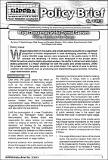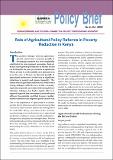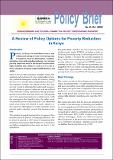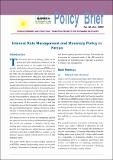| dc.description.abstract | Wage employment in the public and private sectors accounts for a significant
proportion of formal employment in most developing countries. In Kenya,
nearly 655,000 wage earners were employed in the public sector in 2012,
whereas the remaining 1.5 million were employed in the private sector.
While the sectors employ highly educated workers, the ability to attract and retain highly
skilled personnel is a major challenge for both the public and private sectors. Unlike
the private sector, the public sector is not profit-driven. The nature of work is service-oriented
with demands such as producing and implementing good policies including
wage determination policy. Over time, the public sector has relied on
fragmented structures of determining wages,
such as the minimum wage regulation,
administered wage setting, and flexible and
collective bargaining approaches to determine
the formal sector wages. These wage setting
mechanisms have not, however, promoted
productivity and efficiency in the public formal
sectors. Instead, they have propagated
unprecedented wage differences leading to
wage penalties in some sectors of the economy
and also within the sub-sectors. | en |




